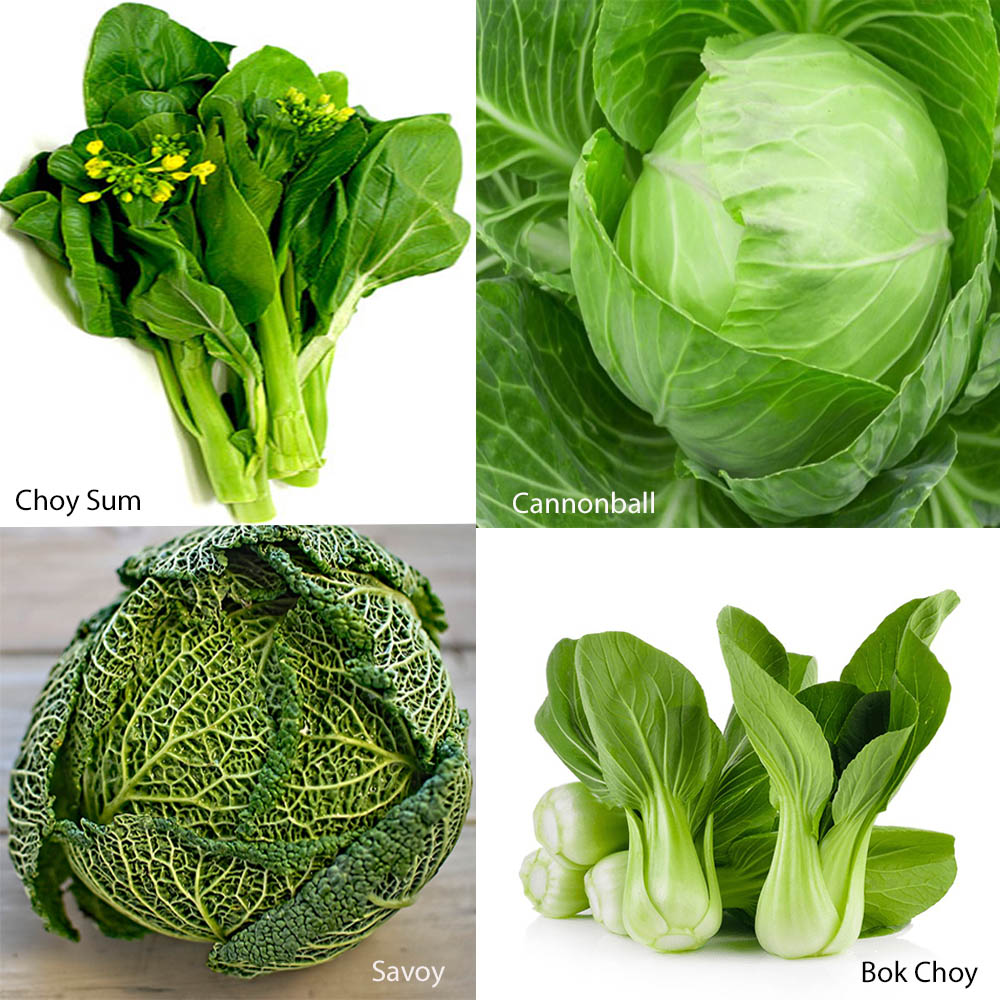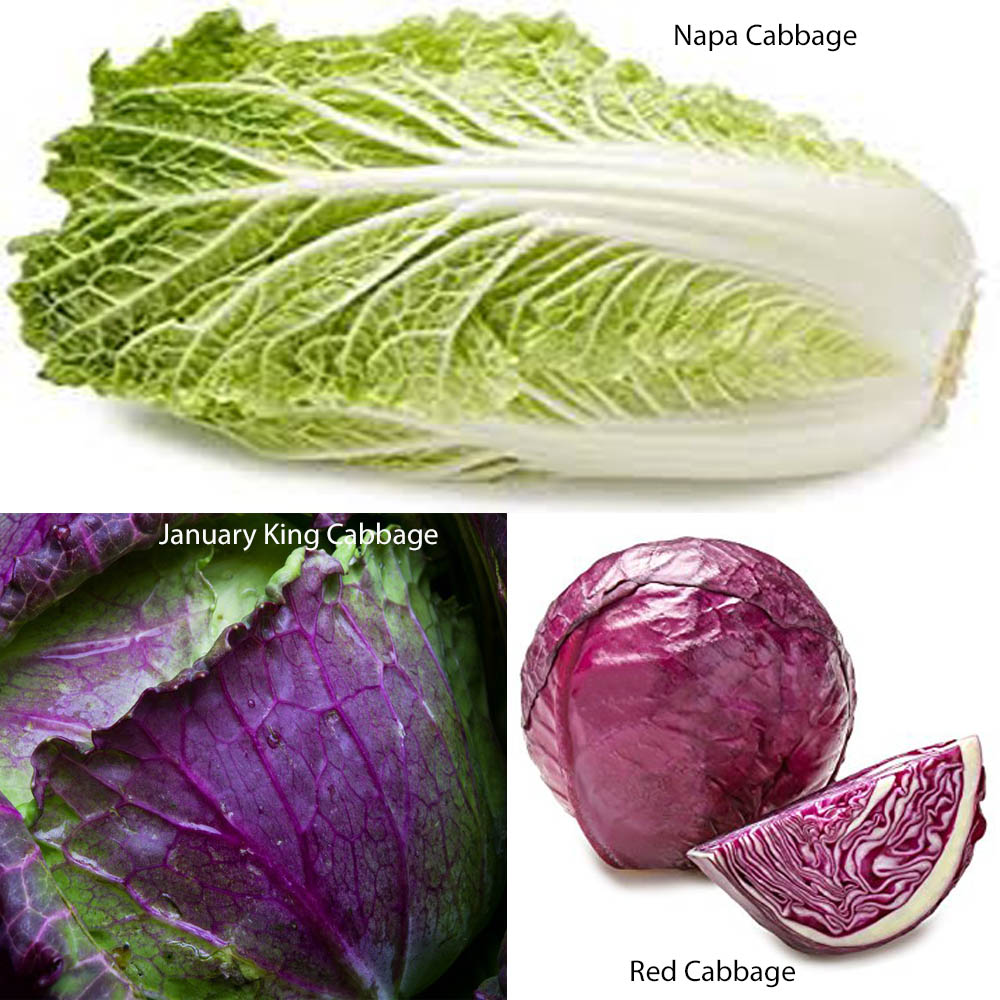


Nutrition
Cabbage is a very good source of manganese, dietary fiber, calcium, magnesium, and potassium. It is also rich in various vitamins including vitamin C, B6, A, K, and E. With a 100 gram serving of cabbage containing about 25 calories, it proudly takes the title of a healthy addition to your diet. It is also high in antioxidants including flavonoid, zeaxanthin, lutein, choline, and beta-carotene.
1. Cannonball Cabbage
More commonly known as green cabbage, the cannonball cabbage is one of the most popular cabbage varieties. It is so named for the way its leaves wound tightly over one another in a dense, compact fashion; with the final product resembling a cannonball.
The dense leaves of this cabbage can be easily shredded or chopped, making it perfect for many different dishes. Coleslaw and sauerkraut are both common choices. The cabbage can also be stewed, boiled or braised
2. . Bok Choy
You may know it as bok choy, bai cai or pak choi but they all really mean the same thing: a dark, leafy vegetable with slender stems that's more reminiscent of Swiss chard or spinach than it is a cannonball cabbage.
Bok choy is a common choice is Asian meals, along with sautéed vegetables and stir-fries. You can also eat it raw, like in a sandwich or salad. This is a great way to add some extra crunch. It is often fermented as well. The most common approach is kimchi.
3. . Choy Sum
You may know it as choy sum or cai xin, depending on your mother tongue; in which, the Cantonese and Mandarin transliteration of its name is "heart of the vegetable". The leafy veggie appears similar to kai lan and its Chinese cabbage sibling, bok choy, but can be easily recognised by the distinctive yellow flowers it bears.
Choy sum can be used in much the same way as bok choy and you can easily substitute one for the other. One simple recipe to try is Stir-Fried Choy Sum with Minced Garlic.
4. . Napa Cabbage
Oblong in shape with frilly, yellow-green leaves, this cabbage variety is sweeter and softer than the other varieties and is widely used in East Asian cuisine.
Napa cabbage works especially well in salads due to the sweetness. It is another common choice for kimchi too, including a variation called baechu-kimchi. The site Maangchi has a great recipe for that dish.
5. . Savoy Cabbage
Probably the most photogenic of the cabbages is this lacy variant. The leaves of the savoy cabbage are more loosely layered and less tightly packed than green or red cabbage, which gives it a shorter shelf life.
Because this is a tender cabbage, you can use the leaves raw as a wrap or something similar. If you want to try something more unusual, the site Olive has a recipe for Linguine with Savoy Cabbage, Olives and Feta. Primal Palate has a simpler recipe for Savoy Cabbage and Bacon.
6. . January King Cabbage
Don't confused this purple-green beauty for the red cabbage. The colours on this curly-leafed vegetable differ from head to head and can range from deep, royal purples to cool, crisp turquoises. And as its name suggests, the cabbage is a hardy vegetable that's usually planted in autumn and harvested in winter.
For a traditional cooking method shred finely and boil in rapidly boiling salted water for 4/5 minutes, drain in a colander then toss with butter, cracked pepper and toasted caraway seeds.
7. . Red Cabbage .
Also known as the purple cabbage or red kraut, the red cabbage changes its colour according to the pH value of the soil it grows in - the leaves grow reddish in acidic soil and more purplish in neutral - acting as a litmus test of sorts.
Red cabbage turns blue-grey as it cooks and color pigments break down but you can easily mitigate this by adding some form of acid (lemon juice or vinegar) to it in a cook. Slice thinly into salads like coleslaw, braise with apple cider vinegar and apples or fermented into sauerkraut. .
30 recipes selected, Page 1 of 2
30 recipes selected, Page 1 of 2
























